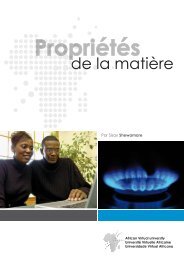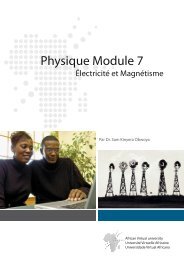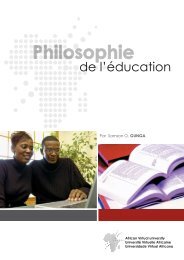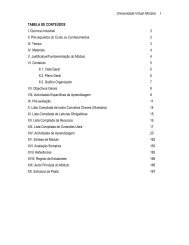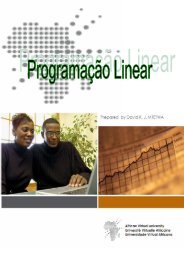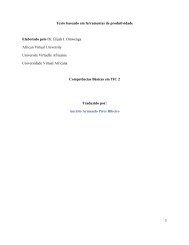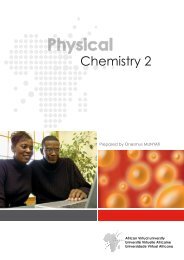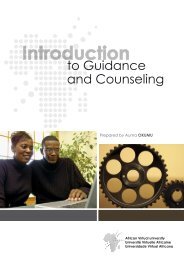Comparative Education.pdf - OER@AVU - African Virtual University
Comparative Education.pdf - OER@AVU - African Virtual University
Comparative Education.pdf - OER@AVU - African Virtual University
Create successful ePaper yourself
Turn your PDF publications into a flip-book with our unique Google optimized e-Paper software.
Conditions Spurring Development of <strong>Education</strong> in East Asia<br />
<strong>African</strong> <strong>Virtual</strong> <strong>University</strong><br />
The following favorable conditions spurred the development of education in the<br />
East Asian countries: first high rates of economic growth enabled the countries<br />
to finance education development, implement politically difficult education<br />
reforms and generate employment for school leavers and graduates. Second, the<br />
emphasis on shared growth in the countries’ overall development policy ensured<br />
that groups that would have lagged behind such as women and adults benefited<br />
through a deliberate focus on universal adult literacy and primary education.<br />
Third, the rapid demographic transition due to decreasing fertility rates enhanced<br />
the countries capacity to cope with primary school-age population. Finally,<br />
the East Asian countries created and developed strong public institutions that<br />
ensured existence of political will and visionary leadership, quality civil service<br />
and consultative and consensus-building mechanisms. Developing educational<br />
policies that required allocation of sizable resources to the education sector<br />
requires political commitment. A quality civil service is required to ensure professionalism,<br />
high performance and integrity. The East Asian countries worked<br />
hard to develop a technically competent civil service. Another support structure<br />
to strong public institutions was the development of consultative and consensus-building<br />
mechanisms. For instance, in Korea and Singapore such structures<br />
included government officials, journalists, labor representatives and academics<br />
Fredriksen and Tan (2008).





